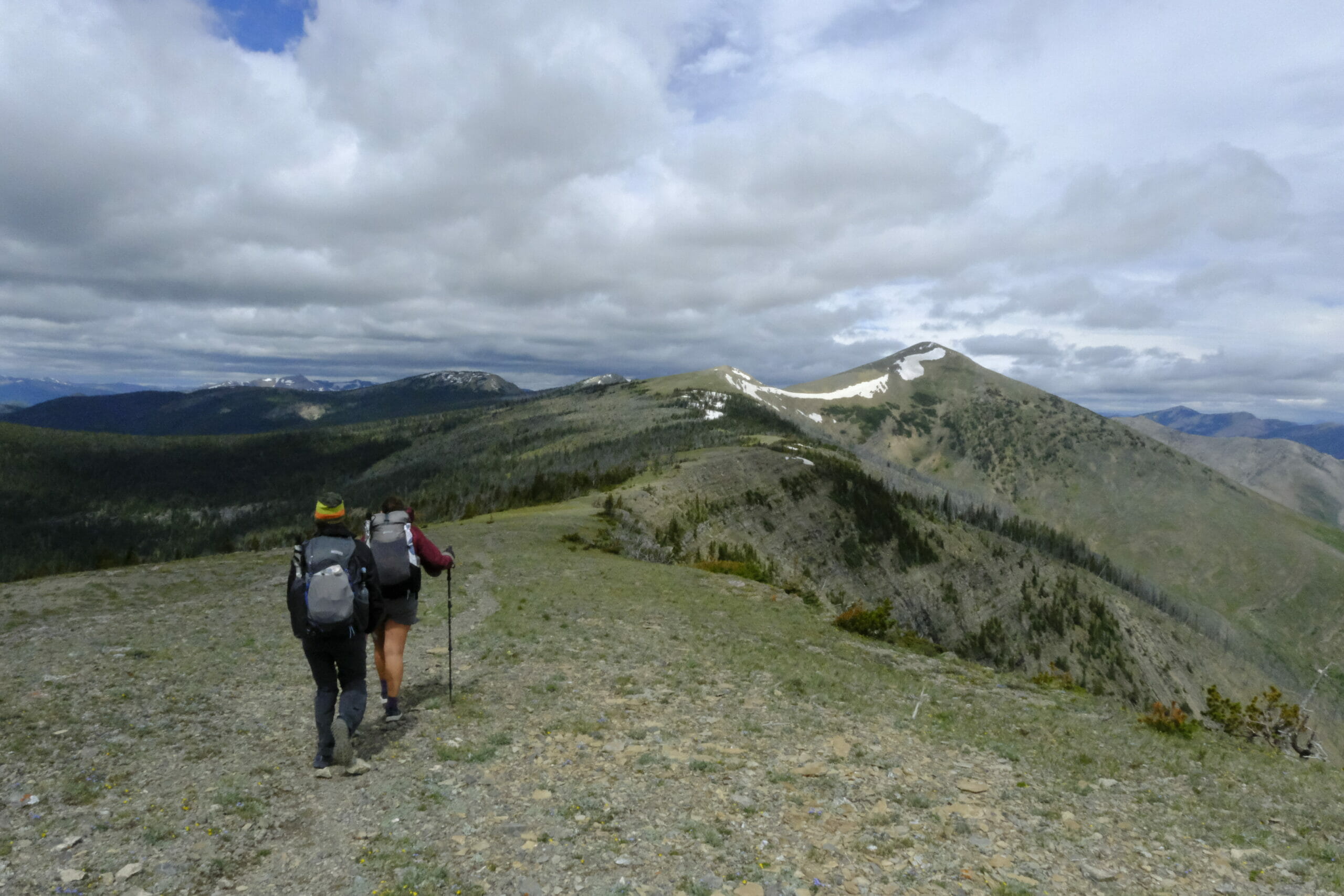Editor’s Note: The Strawbridge family from Lakeland, Fla., is hiking the length of the Continental Divide Trail – all 3,100 miles of it – from Canada to Mexico. Henry Strawbridge, 14, will be providing updates of their journey to Trout Unlimited as they pass through the historic range of seven native trout species. You can track the family and see reports submitted by Henry on this map.
By Henry Strawbridge
Our latest section of the Continental Divide Trail took us through the Bob Marshall Wilderness.
The week and a half seemed like the longest section we had ever walked. It was really two sections, but since we didn’t take much of a break at Benchmark Trailhead, it seemed like one wet, muddy, slog.
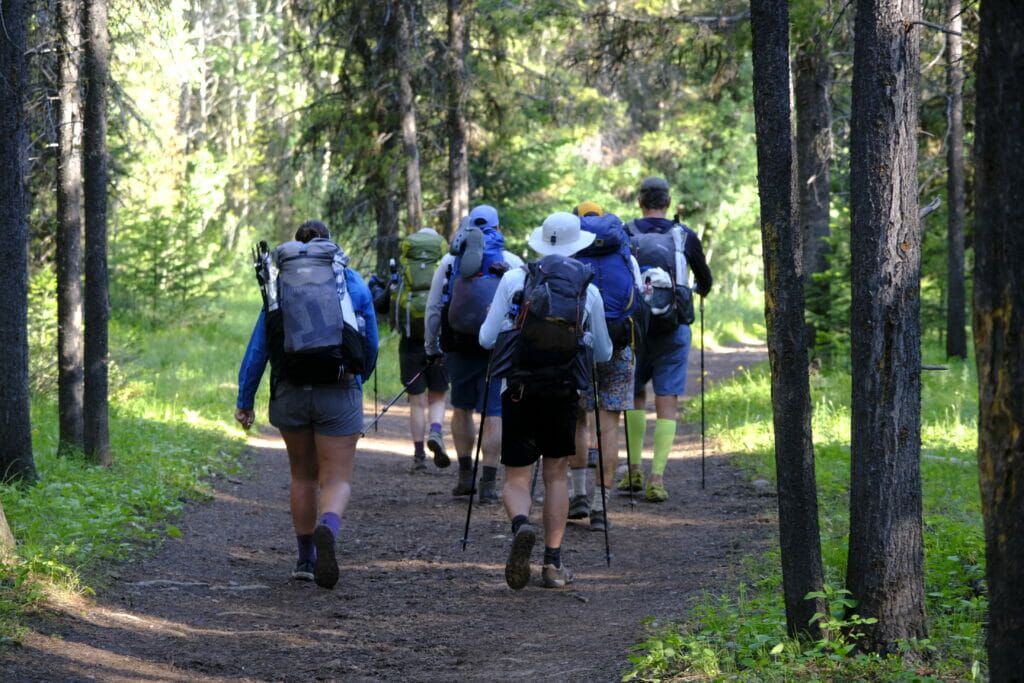
The first three and a half days were beautiful. Coming out of Roger’s Pass, the CDT took us right up to the divide and kept us there. The wind, which was funneled up towards us by the slope of the mountains, came whipping through Lewis and Clark Pass and other passes like it. The second day we walked into the Bob Marshall Wilderness, which is notorious for its large grizzly bear population.
The further we walked into the wilderness the more wildlife we encountered. We even started to see fish in two of the creeks. But along with the animals came the weather. In total we only had three days with no rain.
Three and a half days in, we met up with the Brown family, friends of ours doing a loop hike in the Bob.
At Benchmark Campground, we joined together to hike two days with them. To replace the one I lost, they brought me a thermometer (a pink cow) that I would have loved to use, but sadly the cow could only take human temperatures.
The first day we hiked 15 miles, (about two thirds of a normal day of walking) played a lot of word games and set up camp at 5:30 p.m. and enjoyed a good campfire.
The next morning, we woke up at 6 a.m. and left about 9 a.m. We planned to camp at Mye Lake, which was only 12 miles away. Surprisingly we actually finished later than the day before.
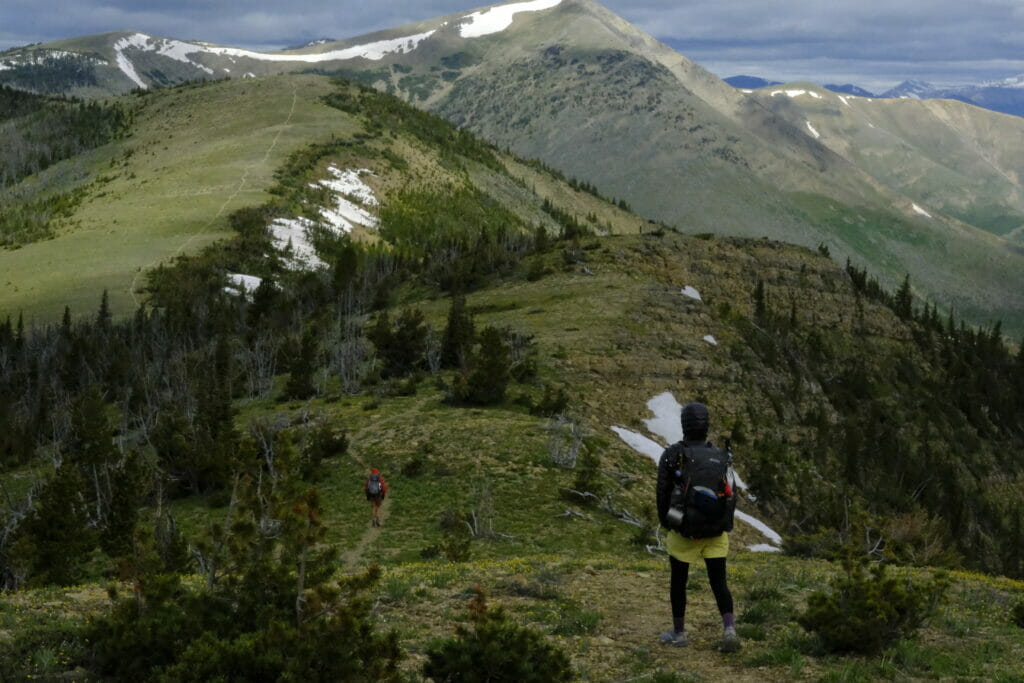
The prettiest part of the whole section, at least to me, was the Chinese Wall, which is basically a gigantic wall sticking straight out of the mountains. It extended for five whole miles — just a 1,000-foot cliff blocking all westward travel.
After the comfortable, fun camping with the Browns, we started our “luxurious, easy going” 21-mile days. At two of our lunches we stopped at ranger cabins with rivers and views right outside the front door. If I ever wanted a job in the woods, living in a cabin doing trail maintenance would be it.
On the final day we got up with 10 miles to Highway 2 and so, after we crossed the Two Medicine river 10 times and walked through a muddy track of a trail, we reached the highway.
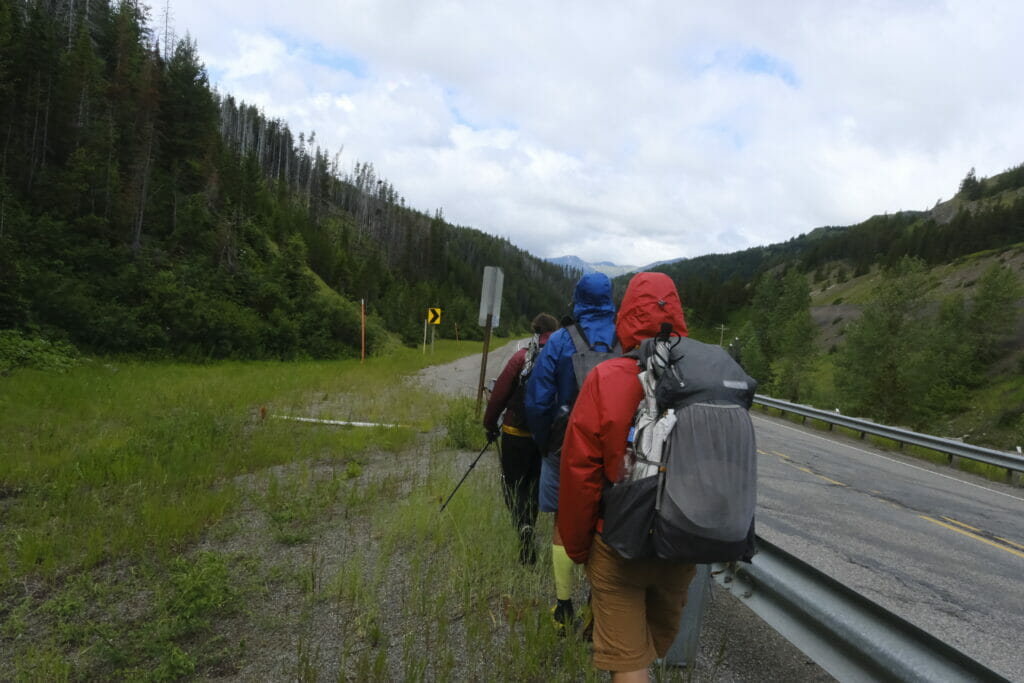
Because of COVID-19, the Blackfeet Nation has decided to ban all travel in 2020, so Glacier National Park isn’t going to open the east side of the park. While in the Bob we met a hiker named Sanny. He told us a road walk around West Glacier was possible and dad took a video of Sanny’s directions. Other hikers advised us not to do it. After a big debate we decided we would try it.
When we made it to the road earlier than expected dad gave us an unwelcome surprise. He wanted to get a head start on the road walk, so off we went.
We tried to invent some games for the road walk, and we came up with two. The first was if you made a sign to a driver going by and he made the sign back you got a point and the first person to 20 wins. The second was you pick a color, other than white, black, and silver, and you count how many cars of that color you see, first one to 100 wins.
Around 2 p.m., we stopped under a bridge, and my dad would like me to tell you that he caught the very first fish, a native westslope cutthroat trout.
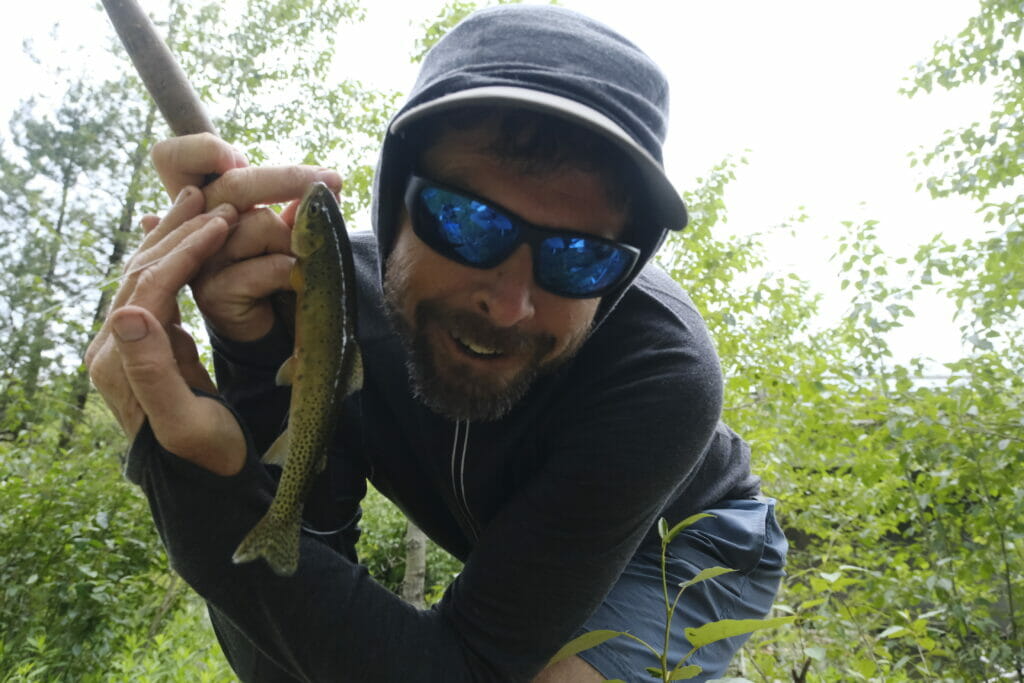
My grandfather is supporting us on the trail. He is in Whitefish, so hopefully, I will get a thermometer and we will start catching more fish. The road walking has been pretty productive so far.
COVID-19 note: The Strawbridge family anxiously watched as the coronavirus issue threatened their plans to do the CDT this year. After careful consideration the family made the decision to drive to Montana to start the trip to avoid any possible exposure on airplanes. None of the family members are exhibiting symptoms. They are avoiding contact with local communities and will continue with limited contact with the outside world throughout the duration of the trip.



